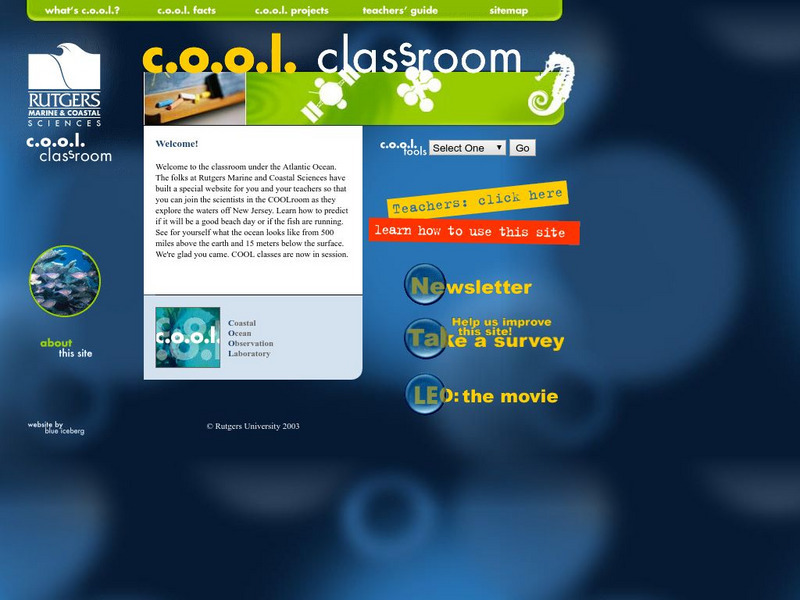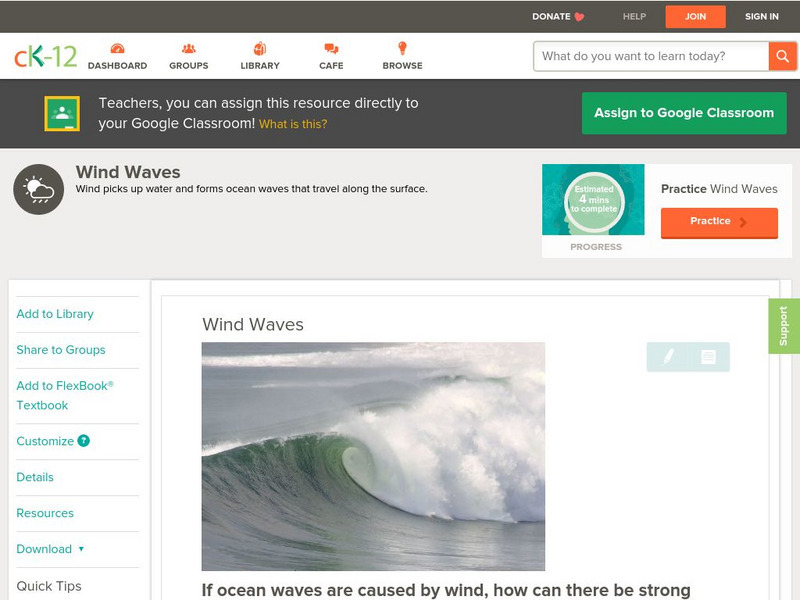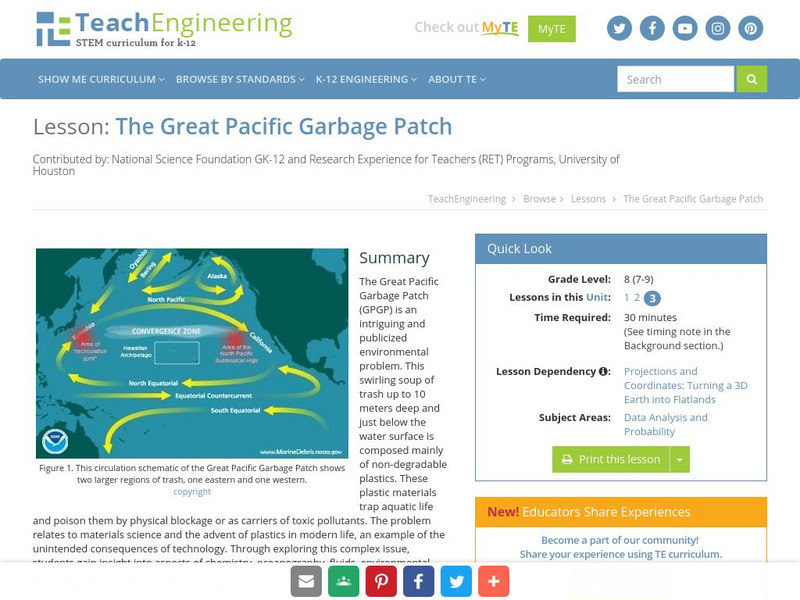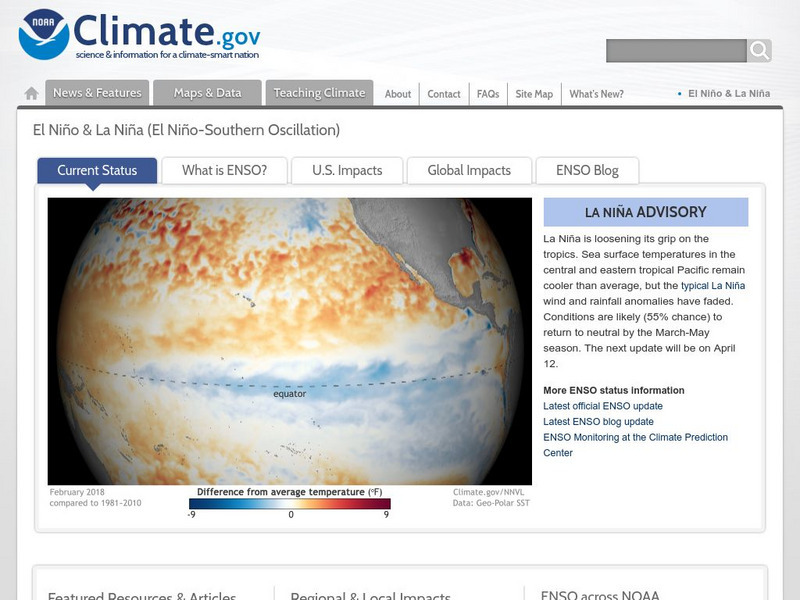Hi, what do you want to do?
TeachEngineering
Teach Engineering: Engineering for the Earth
Young students are introduced to the complex systems of the Earth through numerous lessons on its natural resources, processes, weather, climate and landforms. Key earth science topics include rocks, soils and minerals, water and natural...
Other
Lunar and Planetary Institute: Oceans From Space
This collection of photographs from space-shuttle missions shows some features of oceanic circulation that simply cannot be seen from any other vantage point. This site is a great resource for many different topics of study.
Other
Rutgers Marine & Coastal Sciences: Cool Classroom
Students and teachers can explore the work of marine scientists and observe the ocean from their computers. Learn about Rutgers Coastal Ocean Observation Laboratory, discover why oceanography is important, and see what life is like in...
Other
Nanoos: Well, Well, Well [Pdf]
This lesson provides students the opportunity to investigate the relationship between winds, surface currents, sea temperature and upwelling and downwelling off the coast of Oregon and Washington.
CK-12 Foundation
Ck 12: Earth Science: Wind Waves
[Free Registration/Login may be required to access all resource tools.] Wind picks up water and forms ocean waves that travel along the surface.
Science Education Resource Center at Carleton College
Serc: Chesapeake Interactive Modeling Project
Understand the basic characteristics of circulation in the Chesapeake Bay, by allowing students to change the wind speed and velocity, and the freshwater forcing through a number of subestuaries, and observe the resulting surface height,...
TeachEngineering
Teach Engineering: The Great Pacific Garbage Patch
The Great Pacific Garbage Patch (GPGP) is an interesting and somewhat publicized environmental problem. A swirling soup of trash up to 10 meters deep and just below the water surface is composed mainly of non-degradable plastics. These...
Curated OER
Rice University: Ocean Currents and Tides
This URL will start you out at the site map for Rice University's study of longitude and navigation. Scroll to the section titled "Oceans" and you will find some very good information on surface currents, especially those of the South...
Simon Fraser University
Chem1 Virtual Textbook: The Hydrosphere and the Oceans
As part of the General Chemistry Virtual Textbook, this site examines a variety of topics related to the hydrosphere and the oceans. Topics covered include where the water came from, the hydrologic cycle, Oceanic circulation, atmospheric...
NOAA
Noaa: El Nino and La Nina
La Nina is characterized by unusually cold ocean temperatures in the equatorial Pacific, as compared to El Nino, which is characterized by unusually warm ocean temperatures in the equatorial Pacific. Find more general info, Forecasts,...
NASA
Nasa Space Science Data Archive: Ice on Europa
With the exception of Earth, Europa currently appears to be the only body in the solar system which potentially harbors a global ocean of liquid water. The possibility of liquid water raises the possibility of life, as well. This NASA...
National Earth Science Teachers Association
Windows to the Universe: Earth's Oceans
Windows to the Universe provides a general overview of the importance of the oceans and seas to the Earth. Content includes information on how the oceans impact Earth's weather and contribute to the water cycle.
TED Talks
Ted: Ted Ed: Making Waves: The Power of Concentration Gradients
The constant motion of our oceans represents a vast and complicated system involving many different drivers. Sasha Wright explains the physics behind one of those drivers- the concentration gradient- and illustrates how our oceans are...
NOAA
Noaa: Pacific Marine Environmental Laboratory: What Is El Nino?
This page tells you what El Nino is, provides links to animations and videos on El Nino, explains how to recognize El Nino, and discusses the history of significant El Nino events.















